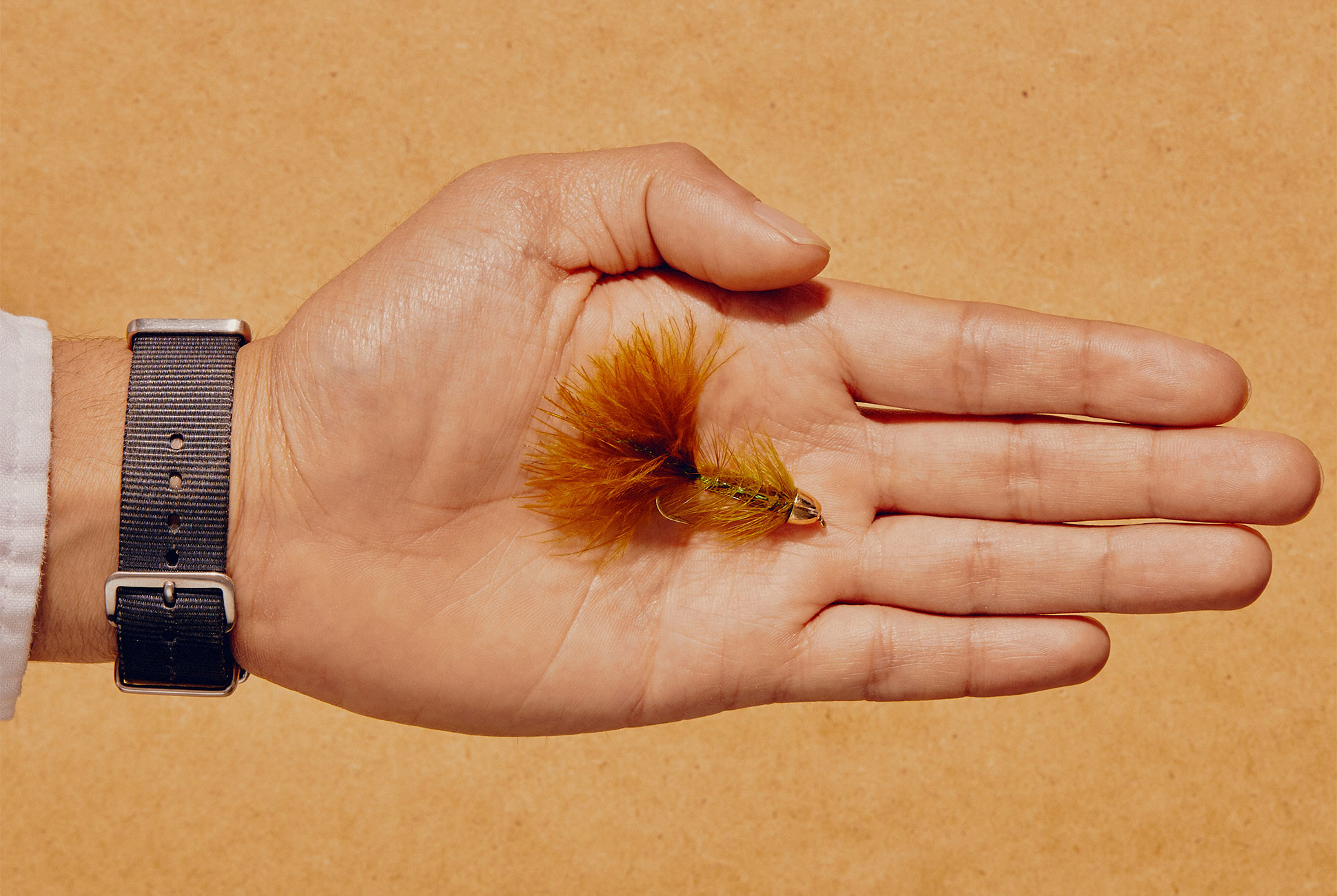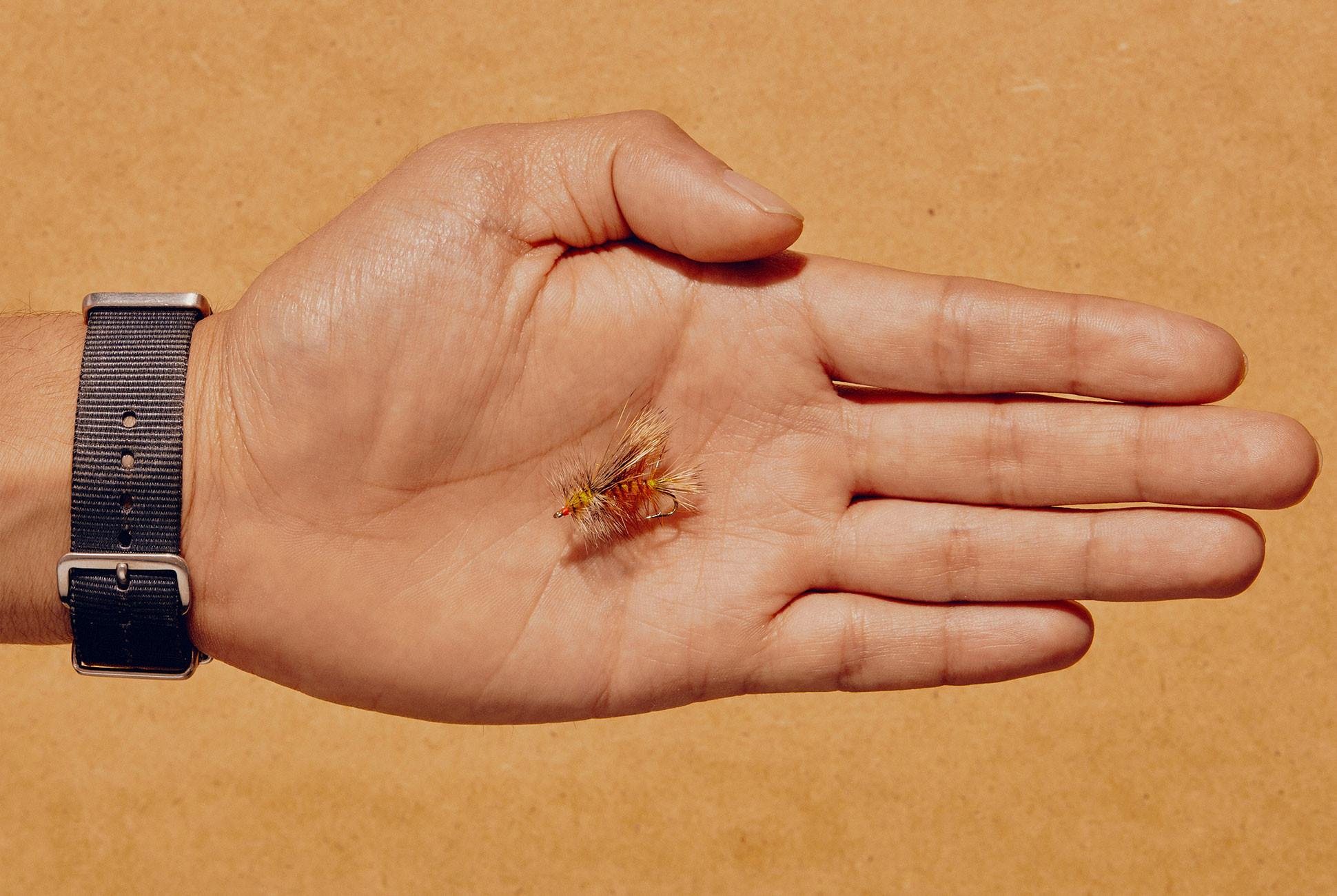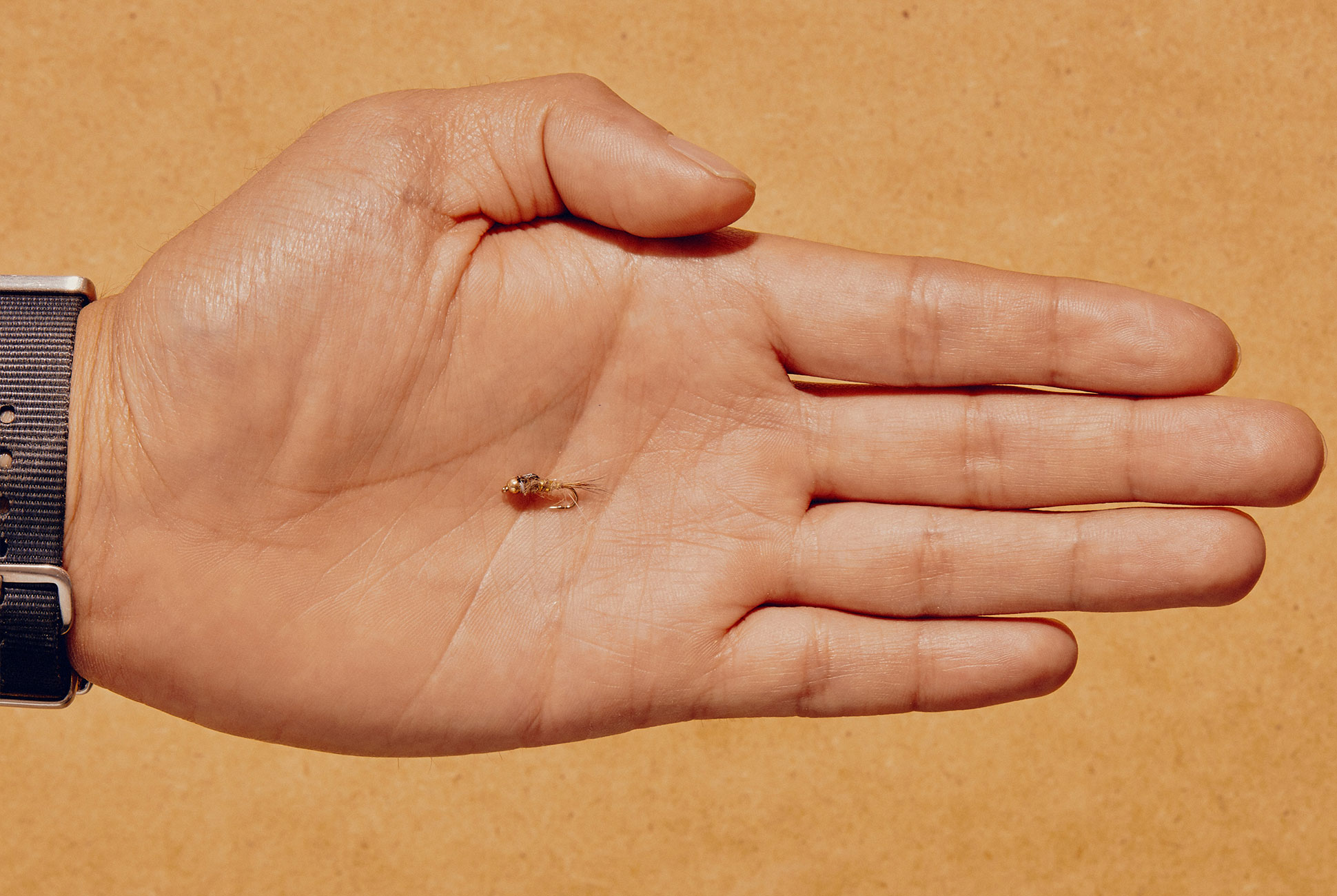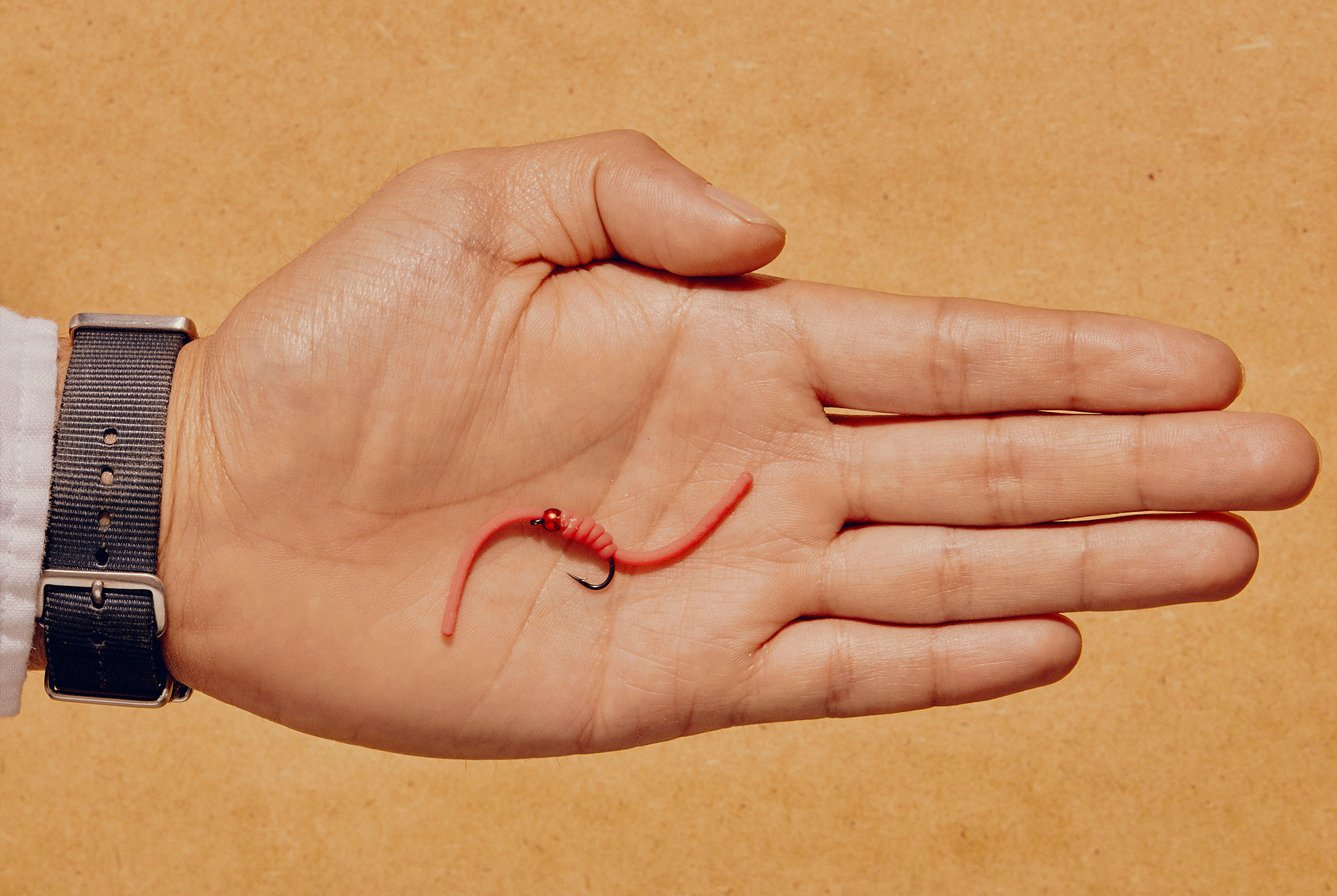As seasoned fishermen know, tailoring your fly box to the region and river you are fishing is important when angling for trout. Trout’s feeding habits change throughout the year and can be affected by water clarity, temperature and rate of flow, as well as cloud cover, air temperature and even changes in barometric pressure. This makes choosing the right fly at the right time one of the dark arts of fly fishing.
And yet, these five flies are all-around all stars with an almost universal fish appeal that can, if fished correctly, break a bad streak, save a trip and maybe even land you a trophy trout. And, being very common patterns, they can be found at almost any fly shop.
Flies are annotated by size — the higher the number, the smaller the fly. Generally, nymphs and dry flies in size 16 to 12 are the most common, but size 20 or 22 dry flies are often used. Streamers in size 6 to 4 tend to be most useful. Varying sizes can sometimes yield great results, but speaking to a local guide or fly shop is always a great way to zero in on the right size and pattern. The old adage ‘big fish eat big food’ doesn’t always apply; large trout frequently feed on very small insects.
Outside of getting snagged or getting broken off by a fish, flies should last you several seasons. Letting them dry thoroughly after use will protect them the metal rusting and thread degrading, extending the life of a fly. If dulled, hook points can be restored with light passes on a hook hone.
Brass Cone Wooly Bugger – Olive Size 6
In the angler’s toolkit, the Wooly Bugger is like a roll of duct tape. Capable of mimicking a number of aquatic insects, leeches and small baitfish, the Wooly Bugger works well in almost any type of water in just about any water condition. It’s routinely tied in a number of colors, but olive green tends to be the most practical for all-around use as the naturalistic hue will be evocative of a wider array of creatures. A size 6 will be big enough to entice large fish and yet small enough for something smaller to take, and a gold cone head will help get the fly sink faster, attracting fish that are a little deeper in the water column.
How to Fish It: Nine times out of 10, a Wooly Bugger is fished like a streamer; in other words, retrieved by the angler in a rhythmic pulse. This technique allows the fly to mimic a small baitfish, crayfish or swimming nymph and is often very productive in all kinds of conditions. However, the Wooly Bugger’s marabou tail is very enticing when fished below an indicator — a brightly colored float similar to a bobber used when fishing in ponds. This ‘dead drift’ technique evokes a dead or injured baitfish, a leech or a large non-swimming nymph; the prospect of such an easy meal will often induce strong takes.
Stimulator – Yellow Size 10
Some flies are designed to emulate certain species of insects at very specific moments in their life cycle. But many rivers and streams support several species of insects which hatch in windows of time that overlap, which makes ‘matching the hatch’ difficult. The Stimulator is designed to look generally ‘buggy’ and, as the name suggests, often attract fish that narrow in on food on the water’s surface. Though you can find Stimulators tied in a number of colors today, the traditional pattern is tied in natural brown or yellow, which can stand in nicely for anything from mayflies to small grasshoppers.
How to Fish It: As the Swiss Army knife dry fly, the Stimulator is best fished on the surface at the end of a tapered leader no shorter than nine feet. Most anglers opt to fish the Stimulator like a traditional dry fly — floated on the water’s surface to a rising trout — but the Stimulator’s ample spikey hackle makes it ideal for skating too. Treating the fly with some floatant, twitching and bouncing across the surface of the water will almost always induce explosive surface strikes, especially in the late evening just before dark.
Gold’s Head Hare’s Ear Nymph – Size 16
The Hare’s Ear nymph has been a workhorse for anglers for at least half a century. It mimics a wide array of aquatic insects in their larval stage. Most rivers are crawling with small subaquatic insects, the kind that comprise nearly all of a trout’s regular diet. The tawny rabbit fur that makes up the body of this fly is particularly well-suited for emulating insect legs when submerged and, coupled with a fine wire or tinsel wrapping and gold bead head, the fly offers sufficient — but not off-putting — flash to get a fish’s attention.
How to Fish It: Nymphs are typically fished below some type of indicator which suspends the fly at the desired depth, suggesting an insect larva that has been dislodged from the rocks and flora where they are typically found. While this method is widely effective, the flighty, well-educated trout will get spooked by the brightly-colored float. Tied to the hook bend of a large, buoyant dry fly — like the Stimulator — with a 14- to 18-inch section of fine tippet material (5X or 6X) achieves the same suspended effect while your dry fly operates as a natural indicator, which might also induce an exciting top-water strike.
The Worm – Size 8
There’s likely no fly more divisive than a worm fly. But where some purists see the brightly colored rubber worm as treasonous to the traditions of the sport, more down-to-earth anglers will recognize that worms are an important source of natural protein for trout, even moderate rainfall will coax earthworms to the surface, only for them to be washed into streams and rivers. There are actually a lot of variants of this simplistic fly, but the synthetic ‘wiggly worm’ material is very lifelike when submerged, and a bead adds sufficient weight to help the fly sink when water is high from rainfall.
How to Fish It: When submerged, worms don’t swim, exactly, but they do wriggle — and it’s that wriggling movement that makes trout crazy. With this in mind, a worm fly is best fished under an indicator where it can drift and twist in the current. The worm will be off-putting to some wilier trout but will get their attention, making it a great attractor fly. Tie a muted, natural-looking fly — a Hare’s Ear is a great option — to the bend of the hook; the trout will be attracted to the worm and, if it passes it up, will likely strike the smaller fly following close behind.
Mayfly Emerger – Pale/Morning Dun – Size 16
Trout seem to have a highly refined risk-reward matrix when it comes to feeding, especially when rising to take insects off the surface of the water. By rising, a trout becomes infinitely more exposed to predators, especially airborne ones like osprey and eagles. Emerger flies mimic an aquatic insect that is transitioning from its larval form to its adult form, a process that takes place in the water’s surface film. Because of their shape and design, these flies sit lower in the film than a traditional dry fly pattern, making them an easier — and safer — target for rising trout. Pale colors are good for emergers as many freshly emerged insects are pale, and light-colored flies are easier to spot in the evening when trout are rising.
How to Fish It: Emergers can be fished just like a traditional dry fly, affixed to fine tippet material and a long tapered leader, and are often very effective in the early mornings and evenings. Two or three flies of a similar pattern can be tied in a line — each secured to the hook bend of the fly above it — which increases odds and helps emulate a pod of hatching insects. Another approach is to tie an emerger to the hook bend of a larger dry fly with 14-inches of 5X or 6X tippet. As evening falls, more insects will begin to emerge and feeding trout will cause ripples and swirls. The emerger fly will ride deeper in the water and may be hard to see, so it’s best to set the hook when there is any disturbance within a foot of your larger fly as it’s probably your emerger that got taken.









